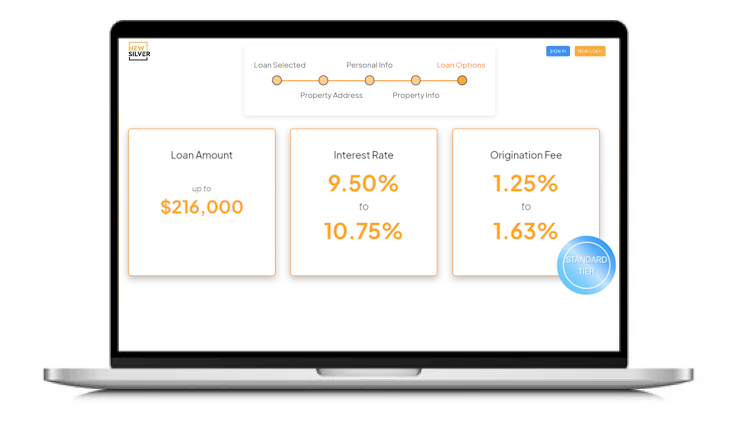The Short Answer
Successful entrepreneurs and investors often leverage cash flow-generating assets to build multiple income streams and diversify their portfolios. These assets can include rental properties, dividend-paying stocks, private lending opportunities, and even digital ventures such as online businesses or intellectual property. By creating a well-rounded portfolio, investors can mitigate risks associated with market fluctuations or economic downturns, ensuring that their income sources remain stable and robust over time. This strategic approach enables them to take advantage of various opportunities while reducing dependency on any single investment.
Despite the common misconception that managing such assets requires extensive expertise, the reality is that with strategic planning and thorough research, these investment vehicles can be accessible to a wider range of individuals. A clear understanding of financial principles, combined with tools and resources readily available today, empowers investors to confidently explore different avenues.
Moreover, learning to identify high-yield opportunities and understanding how to optimize cash flow can significantly enhance long-term wealth-building efforts. Thus, leveraging cash flow-generating assets isn’t just a tactic reserved for seasoned professionals but a viable strategy for anyone looking to secure financial independence.
10 of the most successful and common income generating assets are:
List Of Assets That Generate Cash Flow
Successful entrepreneurs typically use income generating assets to establish multiple income streams and diversify their portfolios. The income generating assets below don’t require extensive experience, which means that investors who have planned and researched strategically can still benefit from these. Building wealth through assets that generate cash flow is an accessible and effective method for investors. Let’s take a look at 10 of the most useful assets that generate cash flow.
1. Rental Property and Rental Income

One of the most successful ways to generate cash flow is through rental properties that can produce a rental income. In fact, according to Pew Research, over 72% of single-unit rental properties are owned by individuals. Investors typically purchase a property that is located in a high-demand area with a favorable rental market. To be successful, rental rates on these properties need to be competitive based on the features of the property, and aligned with the market conditions. As such, it’s vital that rental property investors conduct research on comparable properties in the same area.
Rental properties need to be adequately maintained in order to appeal to tenants and retain good tenants. Investors who don’t wish to manage the property themselves can hire a property management company or individual. While this is an extra cost, it allows investors the chance to hand over the day to day operations to someone else, while they focus on other things. Rent collection platforms are another way of handling the management of a rental property, by automating rental income and ensuring that rent is collected on time.
Rental real estate forms one of the most popular income generating assets as it offers investors the opportunity to earn rental income over a long period of time, and this passive income is an ideal way to generate cash flow. Investors can budget according to the rental income they will be receiving, to pay off the cost of managing and maintaining the property, and in many cases, help with the mortgage on the property.
2. Real Estate Investment Trusts (REITs)

Real Estate Investment Trusts (REITs) give people the opportunity to invest in a wide range of assets. There are both publicly traded REITs and private REITs. Shares of public traded REITs can be invested in using online stock trading platforms, whereas private REITs offer accredited investors the chance to invest using private platforms that have different offerings than public ones. Investors who don’t have extensive experience in real estate can use REITs as a way to diversify their portfolio into a variety of areas, and create a balanced portfolio.
When evaluating REITs, investors should consider factors such as property types (residential, commercial, industrial), geographical diversification, occupancy rates, and dividend yields. The laws surrounding REITs are in favor of investors, with the majority of their net income being paid out to investors. So, those who invest in REITs can reap the rewards of income producing assets that don’t require a lot of work.
REITs require very little capital to get started, with a minimum of $500-$1000 to open a brokerage account to start investing. Investors who choose to REITs as their cash flow generating asset should make sure to get to grips with the fundamentals of the real estate market, and keep tabs on the market shifts so that they can make informed investment decisions.
3. Real Estate Debts Funds

Real estate debt funds offer an investment avenue for financing real estate projects, often specializing in specific niches like residential construction loans for multifamily apartment buildings. These funds gather capital from multiple investors to provide short-term loans ranging from 90 days to 18 months, using the property itself as collateral.
For investors who are looking for an opportunity with steady returns that allows for diversification and passive investing, real estate debt funds are a good solution. New Silver’s Income Fund, for instance, provides a great opportunity for accredited investors to earn over 14% annually, with quarterly payouts.
Real estate debt funds serve as a valuable investment avenue for individuals seeking returns from real estate ventures without having to be actively involved. These funds offer a means to diversify a real estate portfolio and generate consistent income without the need for hands-on management. Investors benefit from recurring interest payments made by borrowers on their loans, ensuring a reliable source of income.
4. Dividend Paying Stocks

Dividend paying stocks are attractive to investors because they provide regular income in the form of dividend distributions. Investors can purchase shares of dividend-paying companies and become partial owners of these businesses, which means they receive a portion of the company’s profits which are distributed regularly as dividends.
Investors are attracted to this method because they can generate a passive income and this means a regular cash flow that doesn’t require too much time or energy. Companies that consistently pay dividends are typically in a strong position financially, and therefore have a higher commitment to their shareholders, which bodes well for long-term investing.
5. Income ETFs

Income ETFs (Exchange-Traded Funds) serve as valuable income producing assets for generating cash flow due to their focus on income-producing securities. Income ETFs differ from traditional ETFs in that they don’t track a specific index, but instead they are designed to be income-producing investment vehicles for investors who need a consistent stream of income in the form of dividends, interest payments, or distributions.
Income ETFs hold a diverse range of income producing assets like dividend paying stocks, bonds, REITs, and more. Investors can therefore spread their risk across various income generating assets. Investors are paid out at regular intervals, depending on the structure of the ETF. For example, ETFs providing dividend yields may pay out on a quarterly basis, while interest payments could be paid monthly.
Investors can choose an ETF that provides an income that aligns with their financial needs, whether that be monthly, quarterly or annually. Income ETFs also allow for reinvestment options which means that investors can reinvest their dividends into the fund and use it to purchase more shares. The idea behind this is to increase cash flow over the long term.
6. High-Yield Savings Accounts

A high-yield savings account offers a secure and steady stream of income, with significantly higher interest rates than a traditional savings account. High-yield savings accounts often have rates several times higher than the national average, and can therefore provide investors with great returns on their cash. One of the biggest benefits of using a high-yield savings account as an asset for cash flow, is that investors can access their funds quickly and without penalties.
High-yield savings accounts provide regular interest payments, and these are typically a reliable option as these accounts are often held with reputable financial institutions. They can also offer automatic savings, which means that investors can set up recurring transfers from their cheque account to their savings account, and maximize their cash flow over time. High-yield savings accounts are a low risk option for investors who are looking for stability and security in their cash flow asset.
7. Index Funds

One of the most famous examples of successful cash flow generation from index funds is none other than Warren Buffet. Buffet has said that investing in index funds is more affordable and simply better than investing in hedge funds, for example. Index funds are passively managed, and typically track the market, which means they can provide fairly reliable dividend payments.
The main advantages of investing in index funds to generate cash flow are that it’s easy, the fees associated with it are not high, portfolio diversification can easily be done, and the process is simple. However, it’s essential for investors to conduct thorough research and consult with financial professionals to select index funds that align with their investment objectives, risk tolerance, and cash flow requirements.
8. Bonds

Bonds function as a cash flow asset by providing investors with a way to lend money to the bond issuer, in exchange for interest payments that are regularly made, along with full repayment of the bond once it reaches maturity. For example, an investor who buys a government bond would essentially be lending the government money, in exchange they would receive interest payments at intervals along the way to the end of the bond period (maturity) where they will receive their full principal amount back.
While they are a useful cash flow asset, bonds are also used by investors to preserve their capital, which works well with low risk bonds, as the principal amount can retain its value over time, while providing interest payments regularly. Bonds can also be used to save for the future and diversify portfolios by creating a cross-correlation between income producing assets.
9. Real Estate Crowdfunding

Crowdfunding platforms have revolutionized real estate investment by providing a gateway for individuals to participate in large-scale projects with just a few hundred dollars. These platforms act as intermediaries, allowing people to pool funds together to finance various real estate projects. This democratized access was previously out of reach for many investors, opening doors to diverse opportunities across different property types and locations.
Platform Functionality
Reliable platforms are the backbone of this investment model. They host projects, allowing investors to browse and select opportunities that align with their financial goals. However, it requires due diligence and thorough research, along with a risk assessment on each project, to determine whether the investment opportunity is worth pursuing.
Accessibility and Returns
The minimum investment often begins with as little as a few hundred dollars. Funds are typically held in private REITs (Real Estate Investment Trusts) or similar structures, which act as holding companies where the funds can accumulate. These REITs are not publicly traded and often pay regular earnings to investors in the form of dividends. Investors can also receive a lump-sum payment at the conclusion of the property deal or project.
By lowering barriers to entry and offering transparent fee structures, crowdfunding platforms make it easier than ever for individuals to include real estate in their investment portfolios. This accessibility, combined with the potential for rental income and property appreciation, provides a compelling option for those looking to diversify their investments without direct property management responsibilities.
10. Business Ownership & Business Income

Business ownership can be a powerful tool for generating cash flow because this channel can generate income through various methods. Direct ownership of a business provides profits from the business itself, while equity investments in publicly traded companies can also offer investors a way to earn an income from dividends. Alternatively, business owners can earn an income from the sale of business assets, or through capital appreciation over time or even royalty income from intellectual property rights.
Business owners can choose to take their income, or reinvest it into the business and create expansion opportunities, acquire new assets or invest in further research and development, which can vastly improve their cash flow in the future. Ultimately, business ownership is a versatile way that investors can generate income, with the potential to build long-term wealth.
How To Evaluate Cash Flow Generating Assets
Choosing the right income-generating assets can be daunting for beginners, but with a structured approach, you can make informed decisions that align with your financial goals. Here’s how to get started and what to consider:
Assess Potential Returns And Annual Yield
Consider the potential returns and the annual yield of the asset, which includes evaluating the asset’s historical performance and projected future returns. Compare this with other asset classes and use this to determine which aligns best with your financial needs. Pay attention to dividend yields, rental income, interest rates and profit distributions specifically, when you’re assessing the overall returns and annual yield from each asset.
Evaluate Risk And Volatility
It’s important to consider your appetite for risk, and how this compares with the risk involved with each asset. Look at the impact of market fluctuations, economic shifts and credit, when determining the risk that each asset poses. Once you’ve closely explored the likelihood of any interruptions in your income or any losses that could occur, you can make a more informed decision as to the overall risk of the investment. For those who are risk averse, for example, a volatile ETF would not be a good place to invest.
Consider Liquidity And Accessibility
Another consideration to bear in mind when choosing the right cash flow generating asset, is how liquid your investment will be and how easy it will be to access funds if you need them. In some cases there are lock-up periods, redemption restrictions, and transaction costs associated with accessing your capital early or liquidating. Make sure that the cash flow asset provides enough liquidity and accessibility to meet your cash flow needs, particularly in the event of unexpected expenses.
Review Diversification And Portfolio Allocation
The best way to spread risk across your portfolio is to diversify, which means investing in different asset classes, industries, and geographic regions. Learn more about how easy it is to diversify with each cash flow asset, and consider adjusting how much you are willing to invest in the asset, in relation to your investment objectives, timeline and risk tolerance.
Examine Tax Implications
Lastly, be aware of tax implications, including income taxes, capital gains taxes, and dividend taxes, as these can significantly affect your returns. Investigate each asset’s tax deductions, credits, and exemptions to optimize your investment strategy.
By combining foundational knowledge with a detailed evaluation of potential assets, you can develop a robust investment strategy that caters to your financial aspirations while managing risks effectively.
Frequently Asked Questions
When it comes to generating income with minimal risk, some financial assets stand out due to their stability and reliability. Here’s a closer look at a few options that are widely considered secure:
Government Bonds and Bond Index Funds: Investing in bonds means you are essentially lending money to governments or corporations, with the promise of receiving regular interest payments. Government bonds, especially those from stable economies, are often viewed as the safest choice due to the low risk of default. Bond index funds, which track a variety of bonds, offer diversification, spreading risk across different issuers.
Certificates of Deposit (CDs): CDs offer a secure way to earn interest on your money over a predetermined period. You deposit funds into a bank, agree to leave the money untouched for a set term, and receive interest in return. Since these are typically insured by the government up to a certain amount, your initial investment is protected, making CDs a low-risk option.
Real Estate Investment Trusts (REITs): REITs allow you to invest in real estate without the need to purchase property directly. These trusts manage portfolios of income-generating properties, and they are required to distribute a large portion of their earnings as dividends. Publicly traded REITs provide the added benefit of liquidity, meaning you can buy and sell shares more easily compared to direct real estate investments.
Each of these asset classes presents a unique blend of security and income potential. Selecting the right one for your portfolio depends on your individual risk tolerance, financial goals, and investment horizon.
Growth potential refers to the possible increase in value of an asset that generates income. It’s not limited to the existing cash flow but also considers future appreciation. This concept is vital for investors when evaluating the long-term profitability of their investments.
- Future Value: Growth potential looks beyond current earnings to assess how much an asset could be worth in the future.
- Appreciation: Assets such as stocks and real estate are notable for their ability to not only provide income but also increase in value over time.
When considering an investment, considering growth potential helps forecast future gains and make informed decisions.
Certificates of Deposit, commonly known as CDs, are financial products offered by banks that can help grow your savings in a secure manner. These are essentially time deposits, meaning you agree to keep your money in the bank for a set period in exchange for a fixed interest rate.
Key Features of CDs:
- Fixed Term: CDs come with a predetermined term, ranging from a few months to several years. During this time, your money remains locked in the account.
- Interest Rate: The interest rate is fixed when you open a CD, providing you with a predictable return on investment.
- Risk Level: They are considered low-risk investments because they are typically insured by the Federal Deposit Insurance Corporation (FDIC) up to applicable limits.
How CDs Generate Passive Income
Despite their conservative nature, CDs can contribute to a steady stream of passive income, especially appealing to risk-averse investors.
- Stable Returns: CDs offer a fixed and reliable interest rate, ensuring a stable income stream without the volatility found in other investment avenues.
- Compounding Benefit: If you choose a CD that compounds interest, your earnings can grow faster over time, amplifying your passive income.
- Rising Interest Environment: As interest rates rise, new CDs become more appealing due to their improved returns compared to traditional savings accounts.
While CDs might not boast the high returns of riskier investments, they provide a safe and predictable way to build passive income. Ideal for those prioritizing security over immediate high gains, CDs remain a favored choice for consistent earnings with minimal risk.




